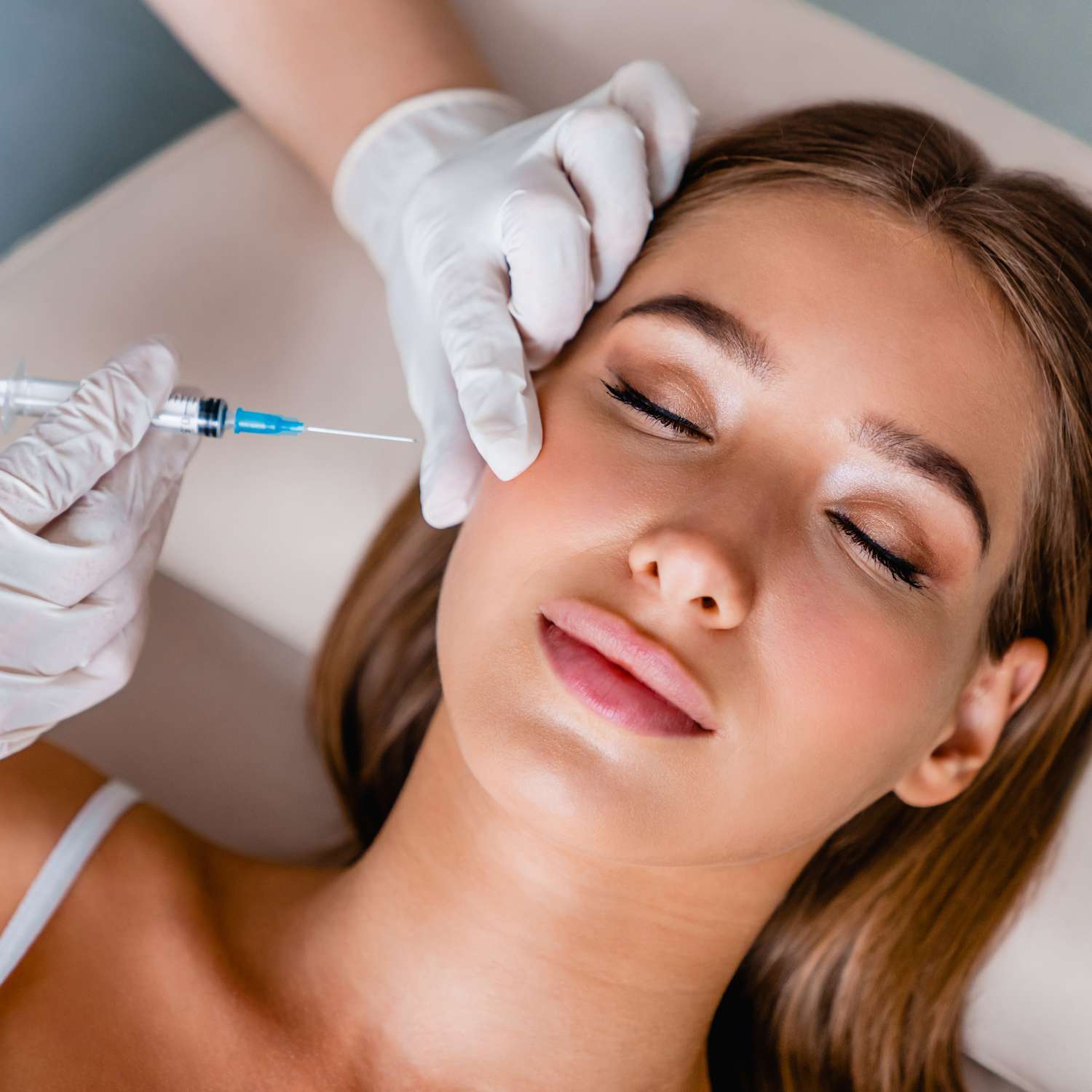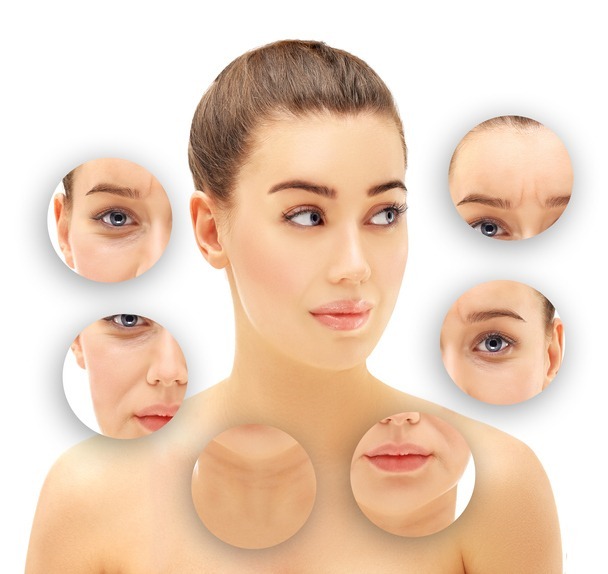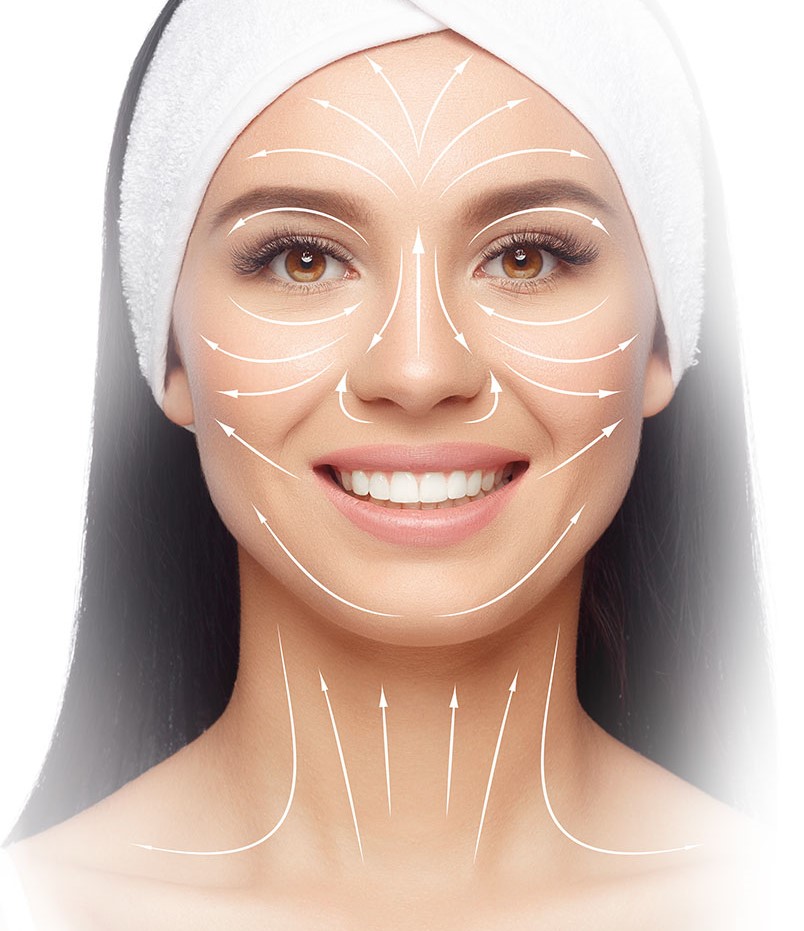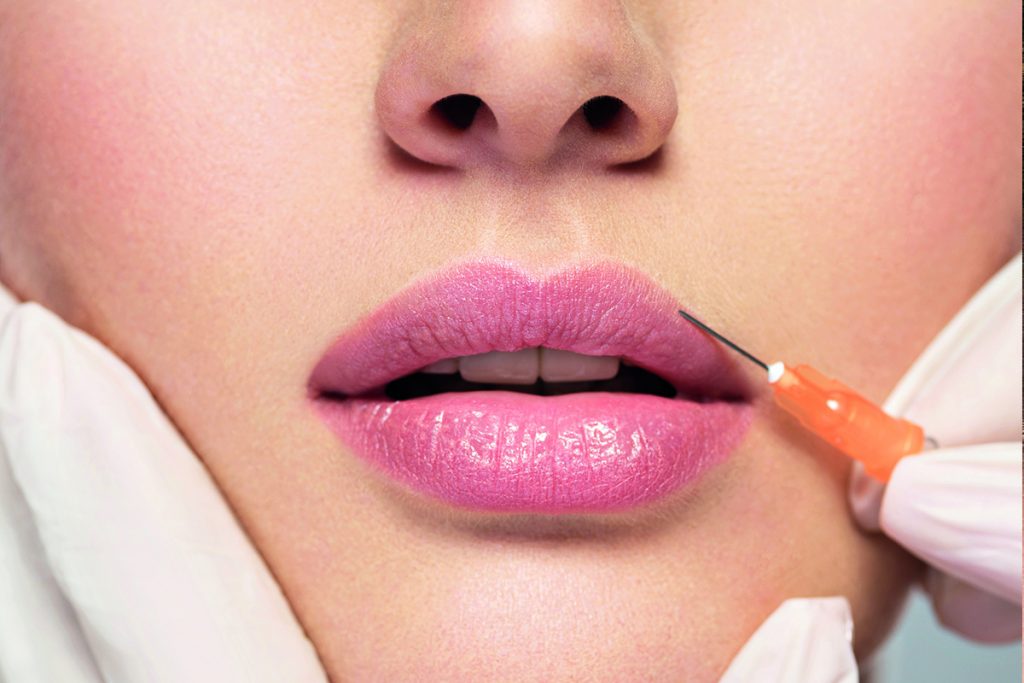

Fillers are injectable substances designed to add volume, smooth wrinkles, and enhance facial contours, providing a non-surgical option to address signs of aging. Common types of fillers include hyaluronic acid, collagen, and calcium hydroxyapatite.
These procedures typically involve a series of injections strategically placed in specific areas of the face to achieve desired results.
One of the key advantages of minimally invasive filler treatments is the relatively quick and convenient nature of the procedures, often requiring minimal downtime.
Fillers can effectively address fine lines, wrinkles, and hollow areas, restoring a more youthful and refreshed appearance.
They are frequently used to enhance cheek volume, redefine the jawline, and plump lips.
At VCUS Healthcare, our team comprises maxillofacial, facial aesthetics, and board-certified plastic surgeons who are committed to delivering the most fitting and effective treatments for you. VCUS Healthcare stands out for offering one of the finest dermal filler treatments at a cost-effective price point.
Dermal fillers are injectable substances used to address facial volume loss, soften wrinkles, and enhance facial contours. These fillers are typically composed of materials such as hyaluronic acid, collagen, or calcium hydroxylapatite. The chosen filler is injected beneath the skin's surface to restore volume, smooth out lines, and create a more youthful appearance.
Hyaluronic acid fillers, in particular, are popular for their natural compatibility with the body, as hyaluronic acid is a substance naturally found in the skin. Fillers can be used to treat various areas, including nasolabial folds, marionette lines, cheeks, lips, and temples.
Dermal filler treatments are minimally invasive, providing a non-surgical option for individuals seeking facial rejuvenation. The results are temporary, typically lasting several months to a year, depending on the type of filler used and individual factors.
These procedures are often performed by qualified medical professionals, such as dermatologists or plastic surgeons, to ensure safety and optimal outcomes.

Wrinkles and fine lines: Dermal fillers are effective in reducing the appearance of wrinkles and lines, especially in the areas around the mouth, nose, and eyes.
Loss of Volume: As the aging process unfolds, a natural reduction in facial volume occurs, leading to sagging and a hollow appearance. Dermal fillers offer a solution by restoring volume and fullness to the face.
Scars: Dermal fillers are employed to diminish the appearance of scars, especially those resulting from acne, enhancing the overall texture and look of the skin.
Lips: Dermal fillers can enhance the volume and definition of the lips, resulting in a fuller and plumper appearance.
Cheeks: Dermal fillers can elevate the contour and shape of the cheeks, providing a more youthful appearance to the face.

Dermal fillers function by augmenting volume and fullness in the skin, administered through a fine needle during a brief procedure lasting only a few minutes.
Poly-L-lactic acid fillers, composed of a synthetic polymer, stimulate collagen production. Injected with precision using a fine needle, the filler is evenly distributed beneath the skin. The results of these fillers are immediate and can endure for several months, varying based on the type of filler used and the individual's skin metabolism.
Forehead: Dermal fillers work to reduce wrinkles and lines on the forehead, simultaneously enhancing the appearance of the eyebrows by adding volume and contour.
Nose: Dermal fillers can effectively address bumps or irregularities on the nose and contribute to straightening a crooked or bent nose.
Cheeks: Dermal fillers contribute to enhancing the contour and shape of the cheeks, providing a more youthful appearance to the face.
Mouth: Dermal fillers are capable of smoothing wrinkles and lines around the mouth while also adding volume to the lips.
Jawline: Dermal fillers assist in redefining and contouring the jawline, resulting in a more chiseled and defined appearance.
Neck: Dermal fillers have the capability to add volume and effectively smooth out wrinkles and lines on the neck.
Around the eyes: Dermal fillers assist in smoothing wrinkles and lines around the eyes, while also adding volume to the tear troughs—addressing the sunken or hollow appearance under the eyes.
Lips: Dermal fillers are employed on the lips to augment both their shape and volume. This not only enhances the overall appearance but also aids in hydrating lips that may have experienced hypertonicity due to aging.
Hyaluronic Acid Fillers: These include brands like Juvederm and Restylane. Hyaluronic acid is a naturally occurring substance in the skin, and these fillers are versatile, suitable for various areas.
Calcium Hydroxylapatite Fillers: Radiesse is an example of a filler containing calcium hydroxylapatite. It is often used to treat deeper lines and add volume to certain areas.
Poly-L-lactic Acid Fillers: Sculptra is a filler that stimulates collagen production and is suitable for addressing volume loss in larger areas of the face.
Polymethyl Methacrylate (PMMA) Fillers: Bellafill is a semi-permanent filler containing PMMA microspheres. It is used for acne scar treatment and can provide longer-lasting results.
Collagen Fillers: While less commonly used today, collagen-based fillers can still be found. They may require skin testing due to the risk of allergic reactions.

Choosing a suitable filler involves considering several factors to ensure optimal results for individual aesthetic goals. Here are key considerations:

Treatment Area: Different fillers are designed for specific areas of the face. Consider the targeted region, such as lips, cheeks, or under-eye hollows.
Type of Filler: Understand the various types of fillers, including hyaluronic acid, calcium hydroxylapatite, poly-L-lactic acid, and others. Each type offers unique benefits and is suitable for specific concerns.
Duration of Results: Some fillers provide temporary results, while others offer longer-lasting effects. Consider how long you want the results to last based on your preferences.
Allergies and Sensitivities: Discuss any allergies or sensitivities with your healthcare provider, especially if you're considering collagen-based fillers or other substances that may require testing.
Provider's Expertise: Choose a qualified and experienced healthcare professional, such as a dermatologist or plastic surgeon, to administer the filler. Their expertise is crucial for achieving natural-looking and safe outcomes.
Treatment Plan: Discuss your overall treatment plan with the provider. In some cases, a combination of fillers or additional treatments like Botox may be recommended for comprehensive results.
Choosing the right clinic and doctor for a dermal filler procedure is crucial for achieving safe and satisfactory results. Here are essential considerations to guide your decision:
Credentials and Qualifications:
Communication and Consultation:
Reviews and Reputation:
Specialization and Expertise:
Clinic Facilities and Cleanliness:
Follow-Up and Aftercare:
Patient Safety Measures:

Schedule a consultation with a qualified healthcare professional to discuss your aesthetic goals, concerns, and medical history.
The doctor will assess your facial anatomy, skin condition, and suitability for dermal filler treatment.

The treatment area is cleansed thoroughly to ensure optimal hygiene.
Topical anesthesia or a numbing cream may be applied to minimize discomfort during the procedure.

Using a fine needle or cannula, the dermal filler is injected into the targeted areas with precision.
The number of injections and the depth may vary depending on the treatment plan.

The provider monitors your immediate response to the treatment, addressing any concerns or questions you may have.

Receive detailed aftercare instructions, including information on avoiding certain activities, products, or medications post-treatment.
Follow the recommended aftercare regimen for optimal results.

Schedule any necessary follow-up appointments to assess the results and address any concerns.
Some fillers may require touch-up sessions for fine-tuning.

Dermal filler results are often immediate, with further enhancement as any initial swelling subsides.
Enjoy the rejuvenated and enhanced appearance of the treated areas.
Avoid Touching the Treated Area: Refrain from touching or applying pressure to the treated area for at least 6 hours post-procedure to minimize the risk of infection or displacement of the filler.
Minimize Physical Activity: Limit vigorous exercise, saunas, hot tubs, and steam rooms for 24-48 hours to reduce swelling and bruising.
Apply Cold Compresses: Use cold packs or ice wrapped in a cloth intermittently for 10-15 minutes at a time to alleviate swelling and discomfort.
Stay Hydrated: Drink plenty of water to aid in the healing process and maintain skin hydration.
Avoid Sun Exposure: Shield the treated area from direct sunlight and UV exposure for at least 24 hours to prevent irritation and hyperpigmentation.
Avoid Alcohol and Blood Thinners: Refrain from consuming alcohol and avoid blood-thinning medications (unless medically necessary) for 24-48 hours post-procedure to minimize bruising and swelling.

Customizable Blends and Combinations: Practitioners can now create customizable blends or combinations of fillers to address multiple concerns simultaneously, providing tailored solutions for individual patients.
Real-Time Imaging and Augmented Reality: Technologies like real-time imaging and augmented reality assist practitioners in visualizing and planning filler treatments more accurately, ensuring precise and natural-looking results.
Integration with Other Treatments: Fillers are increasingly being integrated with other aesthetic treatments, such as lasers and skin-tightening procedures, to achieve comprehensive and synergistic results.
Precision Delivery Systems: Innovative delivery systems, such as micro-droplet techniques, allow for more precise placement of fillers, especially in delicate areas, resulting in improved outcomes.
Focus on Safety and Reversibility: Continued emphasis on the safety of filler treatments includes the development of reversible fillers and techniques to address complications if they arise.
Lip fillers, a popular aesthetic procedure, involve the injection of dermal fillers into the lips to enhance volume, shape, and definition. This minimally invasive treatment offers a temporary solution for achieving fuller, more youthful-looking lips with minimal downtime.
Enhanced Volume: Adds fullness and volume to lips, creating a plump and youthful appearance.
Improved Shape: Defines and enhances lip contours for a more aesthetically pleasing shape.
Natural-Looking Results: Skilled practitioners can achieve subtle and natural results that enhance facial harmony.
Minimally Invasive: A non-surgical procedure with minimal downtime compared to surgical alternatives.
Quick Procedure: Typically completed in a short office visit, providing immediate results.
Boosts Confidence: Enhances self-esteem by addressing aesthetic concerns and creating a more youthful appearance.

The duration of filler results varies depending on the type of filler used. Generally, hyaluronic acid fillers, a common choice for lip augmentation, last around 6 to 12 months. Factors such as the specific product, individual metabolism, and treatment area can impact the longevity of results. Regular maintenance sessions may be recommended to sustain the desired enhancement.
FaceTite harnesses the body's natural response to stimulate collagen production, providing patients with enduring benefits that can extend over several years. The sustainability of results can be enhanced by incorporating a maintenance session of Morpheus8 and maintaining a diligent skincare routine.
The number of filler sessions required to achieve the desired results can vary based on individual factors, treatment goals, and the specific type of filler used. A consultation with a qualified practitioner will help determine the optimal treatment plan for your unique needs.
Lip fillers are generally considered safe when administered by qualified professionals. Reputable products and practitioners, along with proper aftercare, contribute to the overall safety of the procedure.
"Dermal fillers vary in risks and potential side effects. Selecting a filler with minimal complications is vital. Hyaluronic acid and calcium hydroxylapatite fillers are often well-tolerated with few side effects, while poly-L-lactic acid and autologous fat fillers may pose a higher risk."
Copyright @ VCUS Healthcare Center. All Rights Reserved | Designed By Channel Softech